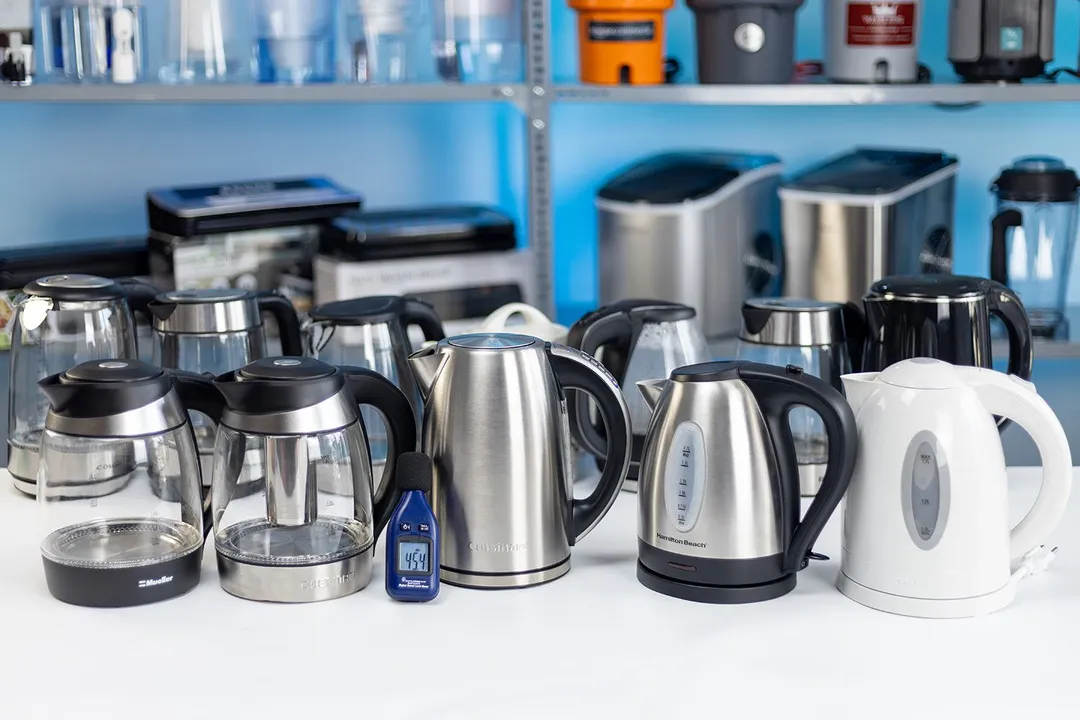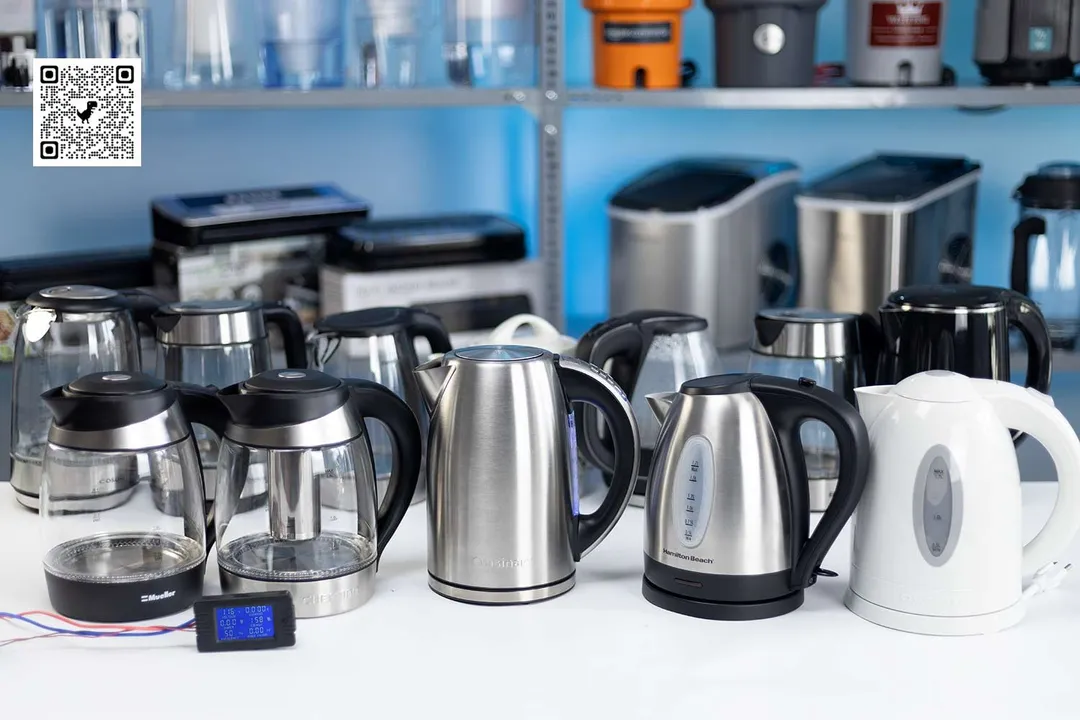Our recommendations are made independently through Research & Testing. We may receive commissions from purchases made via our links.
How We Test Electric Kettles v1.0
We perform a series of tests to assess the kettles we purchase based on their Performance, Design, and Usability.
According to the Environmental Protection Agency (EPA), boiling water requires a full rolling boil (212°F/100°C) for one minute and cooling before use. And, a good electric kettle should be able to boil water in a reasonably short period of time without any hassle, which is the premise of our evaluation.
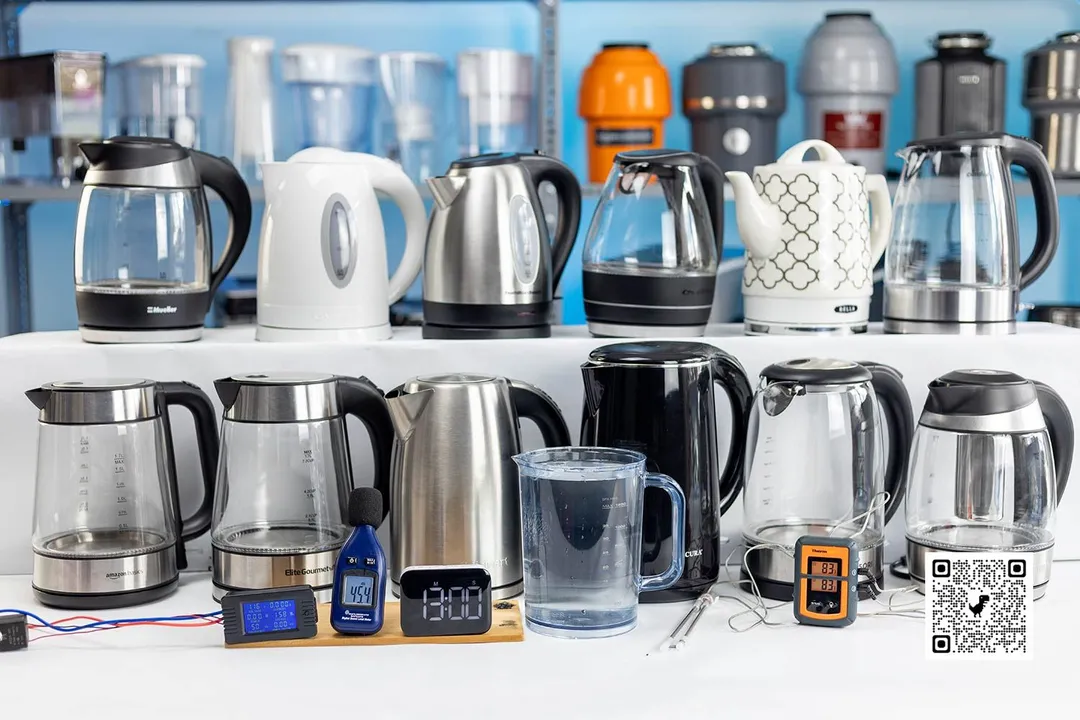
This is where we come in with our series of tests. The goal is to assess the kettles we purchase based on their Performance (40%), Design (25%), and Usability (35%) which we’ll elaborate further down the line.
All scores (segmental and total) are shown on an easy-to-understand scale of 0 to 10. To give you a rough idea, a good kettle with an overall rating of 8/10 should:
- Boil reasonably fast
- Be energy efficient
- Not be too noisy
- Have good heat retention
- Be easy to lift, carry, and pour
- Be user-friendly and easy-to-clean
Performance (40%)
Our tests are practical, simple, and focus on what matters to the user. Therefore, we test for boiling speed, energy consumption, noise level, and (not to be overlooked) heat retention.
Theoretically, water boils at 212°F/100°C. However, this boiling point changes according to altitude or the amount of impurities in the water.
Kettle designers combat this by incorporating two ingenious features:
- A two-layer bimetallic disk (a metal with two different thermal expansions) that ‘flips’ at a specific temperature and turns off the kettle.
- A thermostat that is separated from the water. Instead, steam is directed to the thermostat via a channel, usually in the handle, to increase the ambient temperature to 212°F/100°C.
Evidently, in actual testing, we found all kettles to boil between over 99°C to 100°C without fail. Thus, we don’t use temperature accuracy as a scoring criterion.
Our performance tests focus on the following: Boiling Time (45%), Energy Consumption (30%), Noise Level (15%), and Keep Warm (10%). Out of these four, Boiling Time and Energy Consumption are more intricate and produce some interesting detail.
We video the entire testing process for quality control and also comment on any mishaps along the way. All kettles are cleaned before testing to make sure no impurities affect the results. Since it’s impossible to impartially judge water quality without a lab test, we simply point out bad tastes or odors in the ease of use section below.
Boiling Time (45%)

Rapid boiling is often the most appreciated factor to a good electric kettle.
Our preparation includes 1.5 liters of room-temperature (80°F/26.7°C) tap water, a customized power outlet, and a digital timer. Read our Boiling Time test article to find out the details!
Based on water heat capacity and kettles’ power output, we have 5 min as our benchmark for a score of 10/10. In addition to our collected data, any time more than 11 min scores a zero.
10 | 9 | 8 | 7 | 6 | 5 | 4 | 0 |
|---|---|---|---|---|---|---|---|
5 minutes | 6 minutes | 7 minutes | 8 minutes | 9 minutes | 10 minutes | 11 minutes | > 11 minutes |
Energy Consumption(30%)

Energy consumption is, in our opinion, the second most important aspect of a kettle’s performance because people may boil water multiple times a day.
This test is performed simultaneously with the Boiling Time test with a power meter connected to our customized power outlet . You can see our circuit analysis in the Energy Consumption test.
Using basic formulas, we set 140 Wh as our benchmark for a 10/10 score. Looking at our results, it seemed reasonable to deduct 1 point for each 5 Wh increase in energy consumption.
10 | 9 | 8 | 7 | 6 | 5 | 0 |
|---|---|---|---|---|---|---|
140 Wh | 145 Wh | 150 Wh | 155 Wh | 160 Wh | 165 Wh | > 165 Wh |
Noise Level (15%)
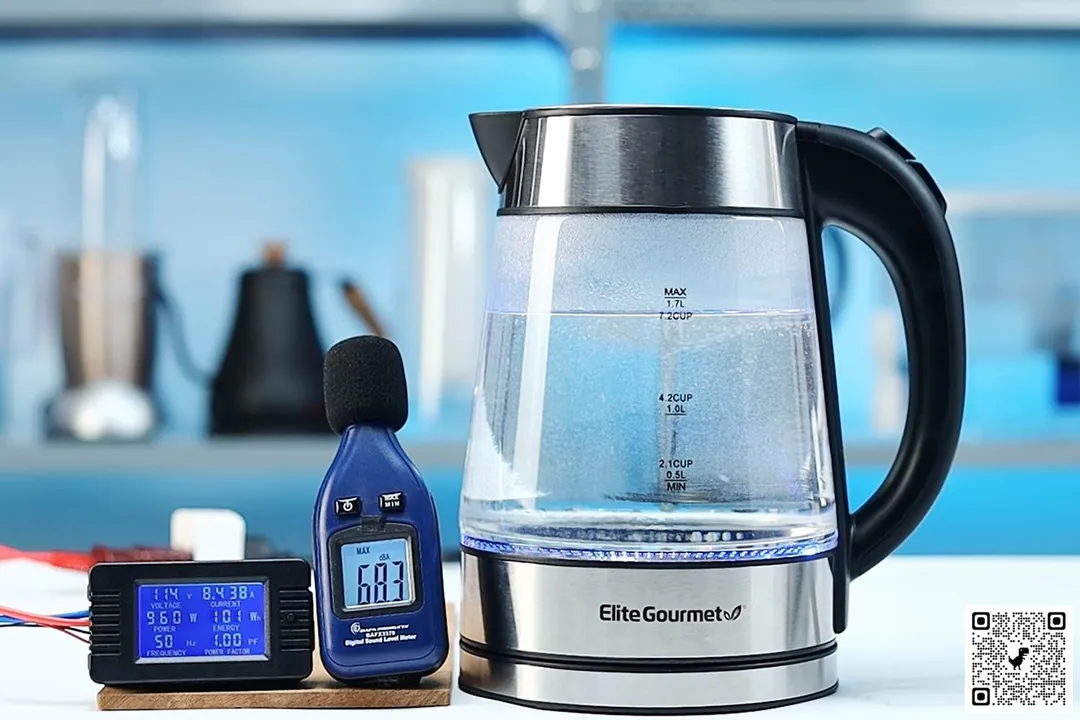
Nobody really likes a noisy kettle! Although there are ways to minimize the noise, it is nonetheless a key point.
Performing a Noise Level test is easy enough. All it requires is a noise meter to capture the peak sound pressure level as we perform our Boiling Time test.
From the CDC’s recommendation and our collated results, 80 dB was a suitable benchmark for an 8/10. We then devised the rest of our tabulation from there.
10 | 9 | 8 | 7 | 6 | 5 | 0 |
|---|---|---|---|---|---|---|
60 dB | 70 dB | 80 dB | 90 dB | 100 dB | 105 dB | > 105 dB |
Keep Warm (10%)
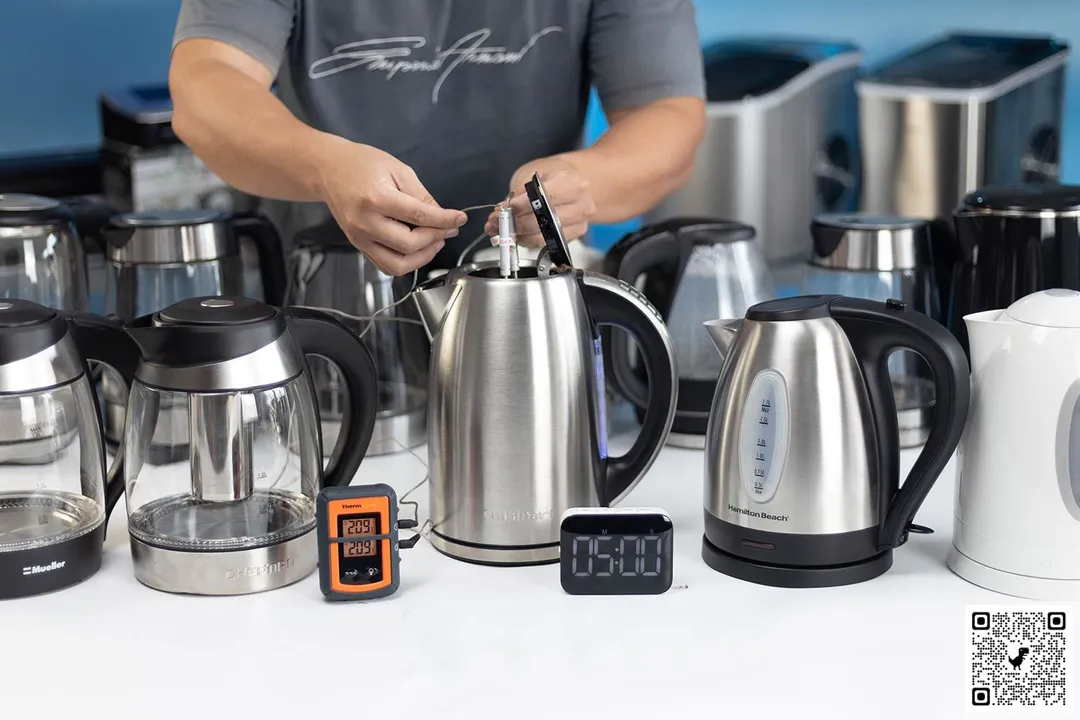
Our Keep Warm test is to see how well the kettle maintains the hot water temperature 5 minutes after boiling. One reason is energy efficiency, but the other is that most people won’t get to the water as soon as the kettle switches off.
For this test, we simply need to count down and then use a two-probe digital thermometer to check the water temperature.
The kettle only needs to retain the water temperature at 208°F / 98°C to get a 10/10 and each 2°F / 1°C drop will result in a one-point drop.
10 | 9 | 8 | 7 | 6 | 5 | 0 |
|---|---|---|---|---|---|---|
208°F / 98°C | 206°F / 97°C | 204°F / 96°C | 202°F / 95°C | 200°F / 94°C | 198°F / 93°C | < 198°F / 93°C |
Design (25%)
We evaluate the design of electric kettles based on their structural features—what they have and what they don’t have. For this purpose, we break down the kettle into four main parts: Carafe (50%), Handle (10%), Lid (20%), and Base (20%).
Carafe (50%)
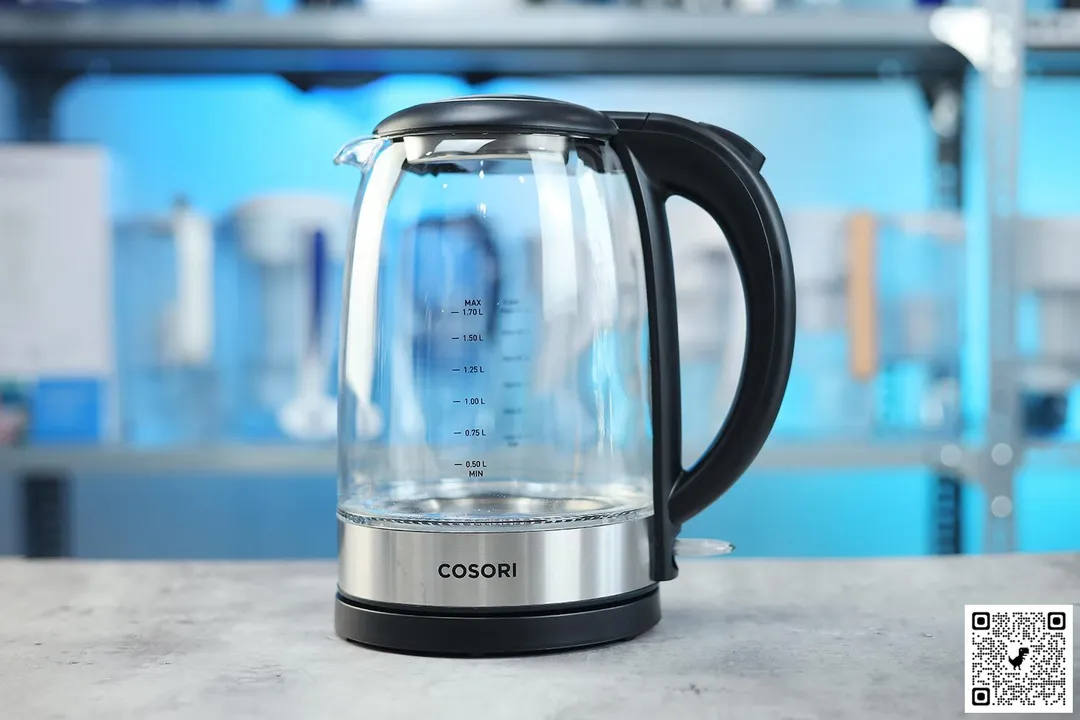
For the kettle’s carafe, we care about the material and the diameter of its opening.Other noteworthy features are an LED ring, water-level markings, limescale filter, and a tea infuser.
(+1) | (+2) | (-1) | (-2) |
|---|---|---|---|
BPA-free plastic | Glass Ceramic Stainless steel | Other | |
Cool-touch | |||
Large opening (8 cm) | Small opening | ||
LED ring | Highly visible | ||
Water levels markings | |||
Limescale filter | Filter removable | ||
Tea infuser available |
Handle (10%)

For the handle, we mostly examine if it has a anti-slip feature or if it feels sturdy and comfortable to carry.
(+1) | (+2) | (-1) | (-2) |
|---|---|---|---|
BPA-free plastic | cool-touch | Other | |
Ceramic Stainless steel | |||
Ergonomic contour | anti-slip | Awkward to hold | |
secure | |||
Comfortable on the wrist |
Lid (20%)
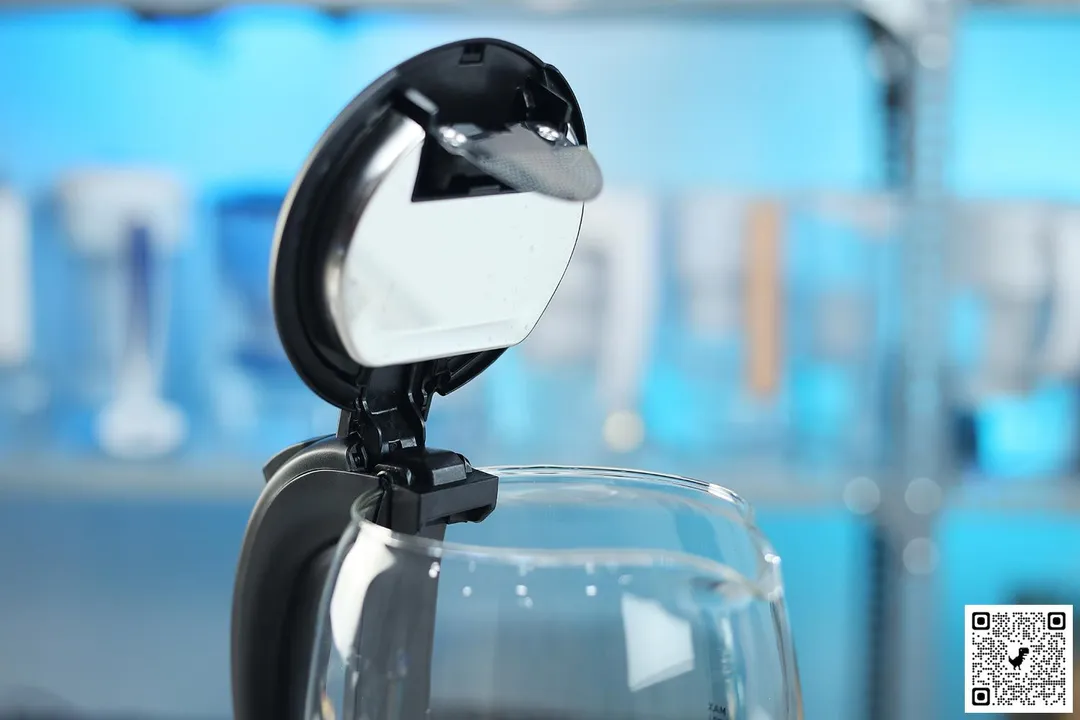
For the lid, we pay attention to the material, opening mechanism, how tightly it closes, and if it’s easy to pour in water.
(+1) | (+2) | (-1) | (-2) |
|---|---|---|---|
BPA-free plastic | Stainless steel Ceramic | ||
Cool-touch | |||
Hinged / Removable | |||
Flip / Pinch-button | Push-button | ||
Slow lid lift | Close tightlỵ | No silicone band | Doesn’t close tightly |
Good opening angle | Unobstructed opening | Obstructed opening | Difficult to pour water in |
Base (20%)
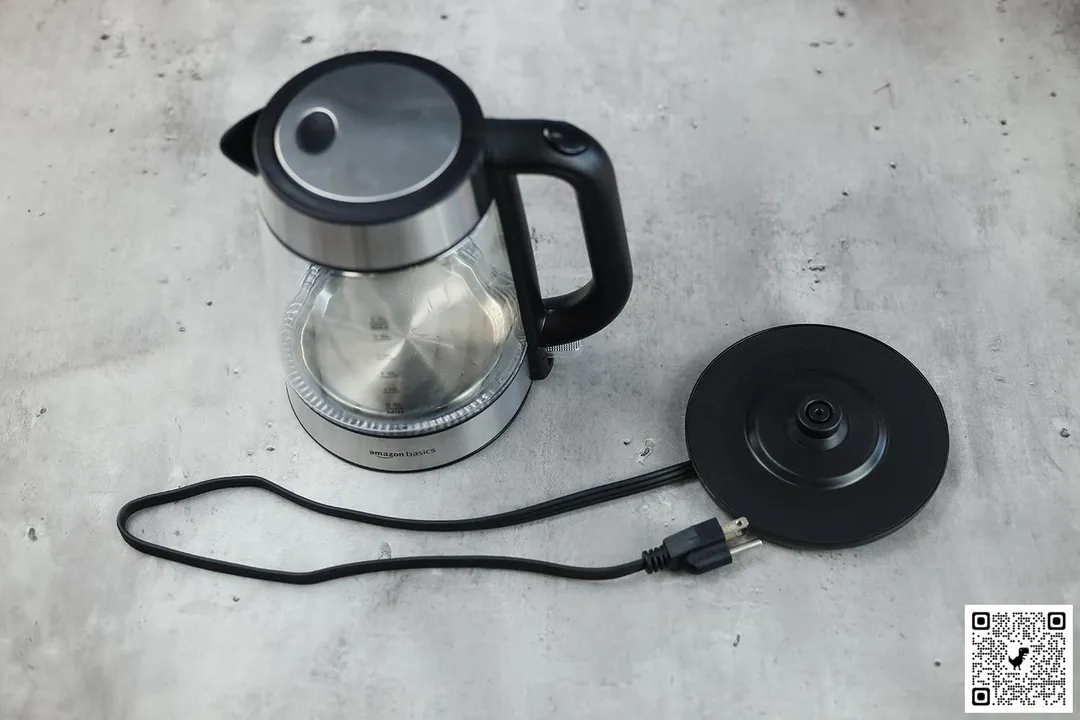
For the kettle’s base, we check the material, rotation, sturdiness, cord storage, anti-slip pads, and how well it fits the carafe.
(+1) | (+2) | (-1) | (-2) |
|---|---|---|---|
BPA-free plastic | Sturdy | ||
Swivel 360° | Cord Storage available | ||
Anti-slip pads available | |||
Fit the kettle well enough | Fit the kettle firmly | Slightly wobbly | Dangerously wobbly |
Usability (35%)
Usability means how we assess the kettle’s User Control (30%), how well its design features work or Ease of Use (50%), and how easy the Cleaning (20%) is.
User Control (30%)
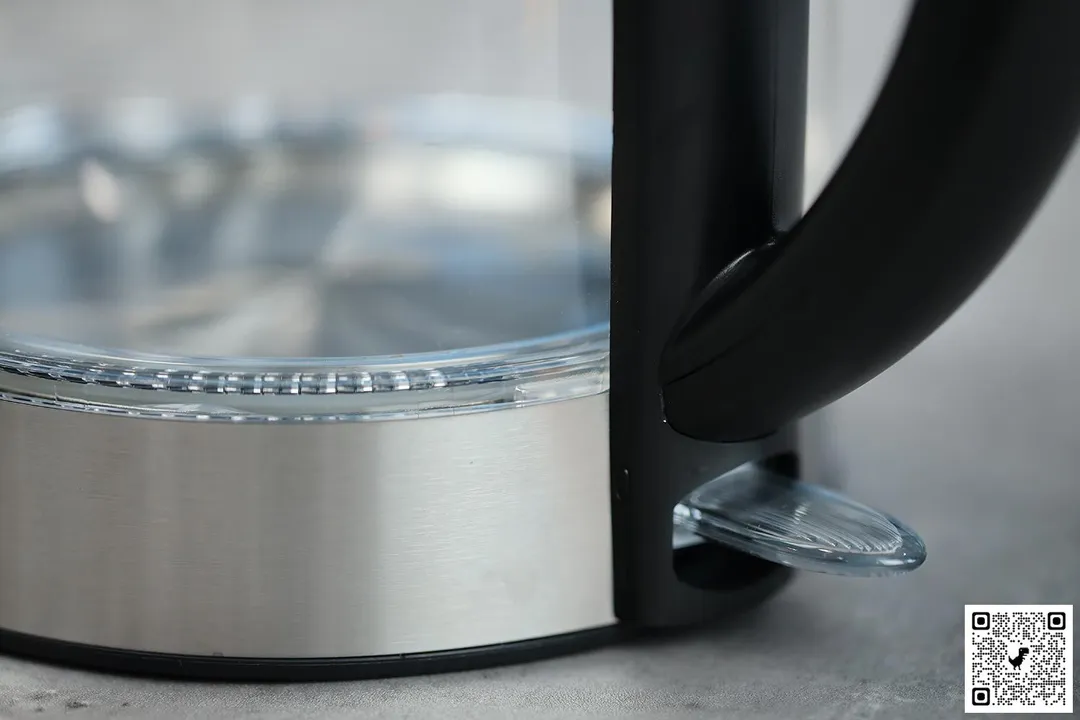
For User Control, we primarily pay attention to the design of the controls including the indicator light visibility. Other key features are automatic shut-off and boil-dry protection.
(+1) | (+2) | (-1) |
|---|---|---|
Control: One touch | Awkward placements | |
Indicator Light | Highly visible | Dim |
Presets | Temperature Control | |
Keep Warm | Automatic Shutoff | |
Highly visible display | Boil-Dry Protection |
Ease of Use (50%)

Ease of use is all about hands-on experience. We spend time with our electric kettles to see if they’re easy to control, lift, open, fill, pour, fit the base, and wrap the cord.
(+1) | (+2) |
|---|---|
Easy to open | Easy to control |
Easy to fill | Easy to lift |
Easy to pour | |
Kettle fits base | |
Easy to wrap the cord |
Cleaning (20%)
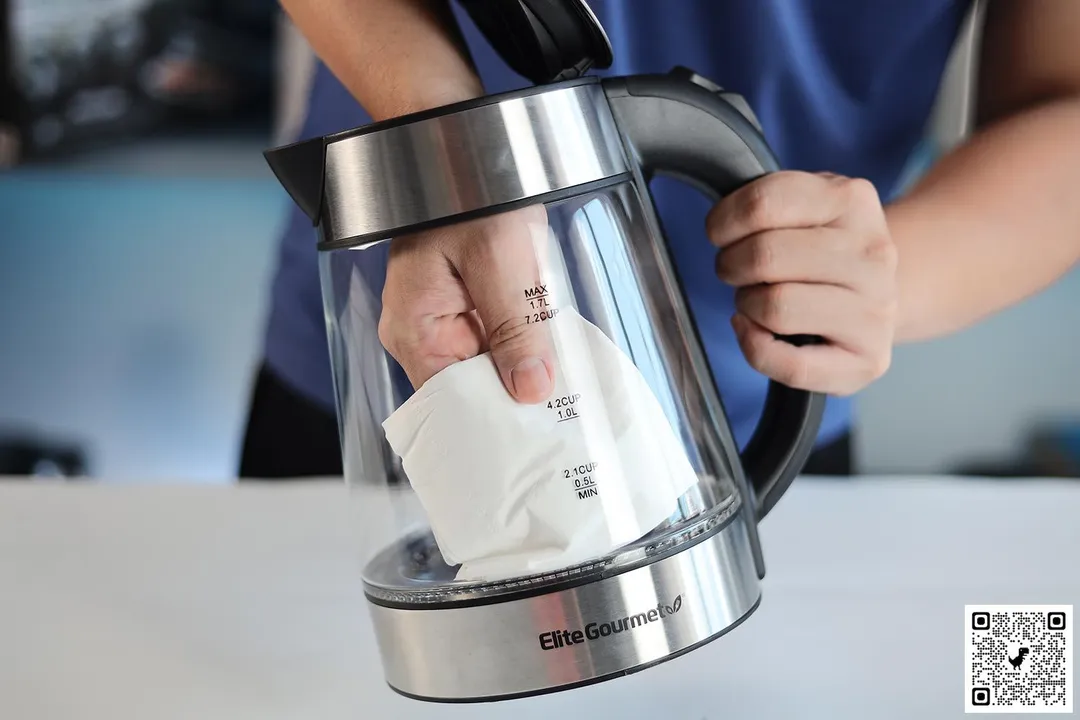
The shape and design of the kettle will determine how easy it is to clean. We check if the kettle has any difficult-to-clean nooks and crannies and whether the opening is unobstructed and the filter removable.
(+1) | (+2) | (-1) | (-2) |
|---|---|---|---|
Easy to clean | Difficult nooks and crannies | ||
Unobstructed opening | Wide opening | Narrow opening | Obstructed opening |
Fixed filter | Removable filter | ||
Hinged lid | Removable lid |
Test Developers
Alan Nguyen is a writer and product reviewer at HealthyKitchen101. His major in English language teaching taught him to present concise information. In addition to his cooking hobby, he values the practical aspects of household appliances.
Lap is Head of the Research, Testing, and Review Team (RTR Team) at HealthyKitchen101.com, where he directs and supervises the testing of kitchen gadgets and appliances.
Nguyen Ntk is a graphic designer, photographer, and videographer whose philosophy centers around respecting and celebrating the beauty of reality. Through his lenses, Nguyen strives to capture the true essence of objects and events, showcasing and highlighting authentic features without distortion or exaggeration.



